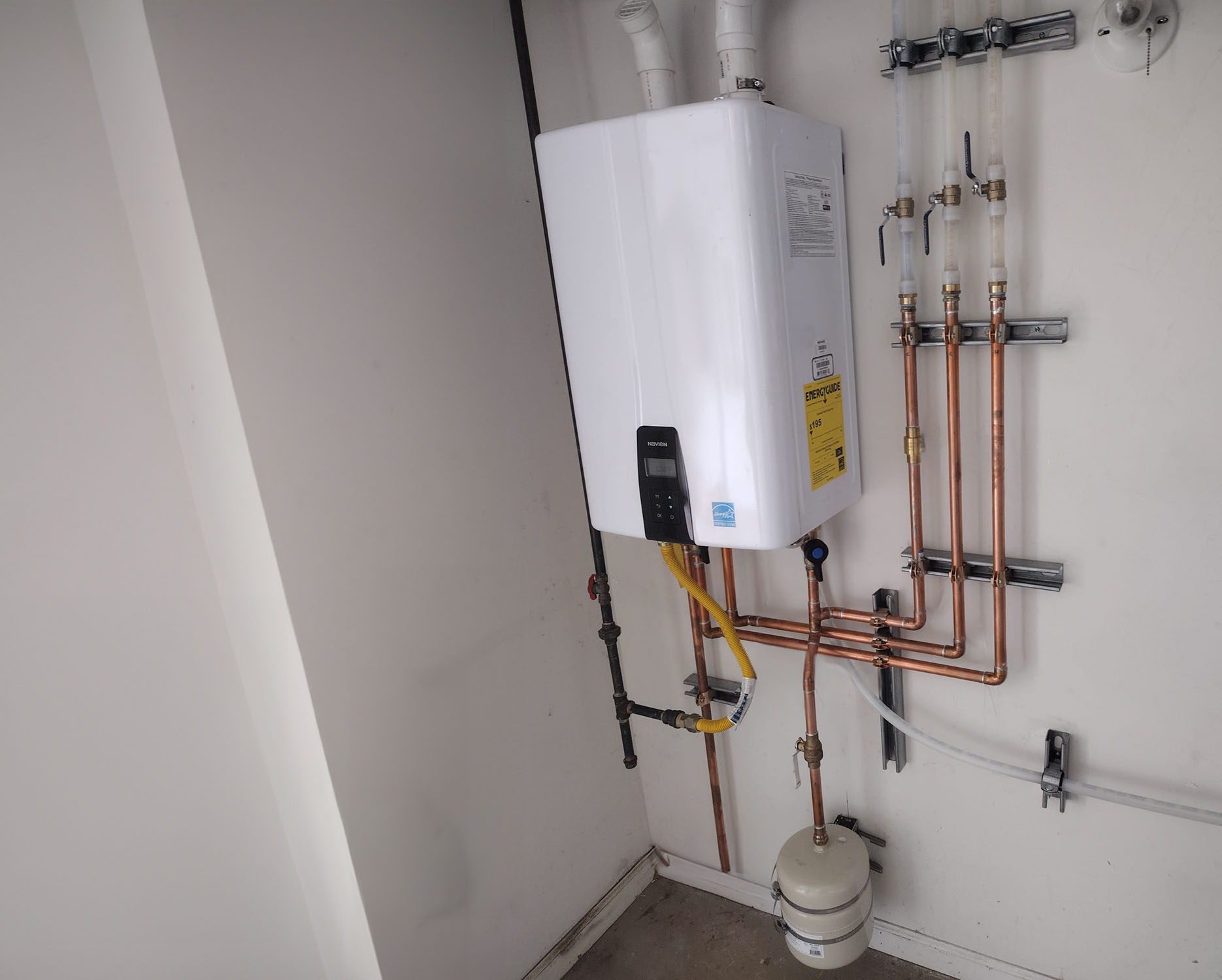- HEP
- Continuous Hot Water

 Continuous Hot Water
Continuous Hot Water
Continuous Hot Water | Tankless Water Heater Install | Plumbing | Madisonville
Imagine stepping into the shower and enjoying endless, steamy water that never runs cold—no bulky tank taking up space, no waiting for reheats, just pure comfort on demand. HEP’s certified plumbers bring this luxury to Madisonville homes with precision, handling every step of your tankless water heater install so you can start saving energy and reclaiming closet space right away.
From choosing the right high-efficiency unit to flawless venting, gas or electrical hookups, and code-compliant commissioning, our team makes the upgrade effortless. We arrive when promised, protect your home like it’s our own, and back our workmanship with rock-solid guarantees. Ready for continuous hot water and lower utility bills? Call HEP today and feel the difference tomorrow.
FAQs
How does a tankless water heater deliver continuous hot water compared with a traditional storage tank?
A tankless unit heats water on demand. When you open a tap, cold water flows through a heat exchanger that is warmed instantly by either a gas burner or electric elements. Because it is not limited by the capacity of a storage tank, it can continue producing hot water as long as water and fuel/electricity are supplied. This eliminates the “running out” problem common with 40- or 50-gallon tanks and is ideal for families who use multiple fixtures at once or run back-to-back showers.
What size tankless water heater do I need for my home in Madisonville?
Sizing is based on two factors: (1) the total flow rate of fixtures you may use simultaneously (measured in gallons per minute, GPM) and (2) the temperature rise required—how much the incoming groundwater must be heated to reach your preferred hot-water setting. In Madisonville the incoming water temperature averages 60–65 °F, so to reach 120 °F you need roughly a 55–60 °F rise. A typical three-bathroom household that might run two showers (2.5 GPM each) and a kitchen tap (1.5 GPM) at once would need a unit capable of 6.5-7 GPM at a 60 °F rise, which generally translates to a 180–199 k BTU gas model or a 27-36 kW electric model. Our plumbers perform a fixture count and temperature calculation on site to recommend the exact size.
Will a tankless water heater really save me money on energy bills?
Yes. Because tankless systems avoid the stand-by heat losses of keeping 40-80 gallons hot all day, the U.S. Department of Energy estimates savings of 24–34 % for homes using less than 41 GPM daily, and 8–14 % for heavier-use households. Savings in Madisonville vary with natural-gas or electricity rates, but most customers see utility costs drop by $75–$150 per year. High-efficiency condensing gas models (up to 0.97 UEF) maximize savings and may qualify for federal tax credits and local utility rebates, further improving payback.
What is involved in the installation process, and how long does it take?
A standard retrofit usually takes one working day. We begin by shutting off water, gas, and power, removing the old tank, and preparing the mounting location. We then install the new venting (stainless steel or PVC for condensing units), size and connect gas or electrical service, add isolation valves and a pressure relief valve, and program the digital controller. After leak and combustion testing, we flush the lines, set temperature, and haul away the old tank for recycling. Permits are pulled through the City of Madisonville, and a final inspection is scheduled to ensure code compliance.
Do I need to upgrade my gas line or electrical service for a tankless unit?
Possibly. Gas models in the 180–199 k BTU range need a ¾-inch gas line and proper regulator pressure; many older homes were piped with ½-inch lines sized for a 40-k BTU tank. If your meter or interior piping is undersized, we’ll provide a cost estimate to upsize. Electric units above 18 kW typically require 150–200 amp service and two to four dedicated 40- or 50-amp breakers. During our free site evaluation we measure existing service and outline any required upgrades so there are no surprises on installation day.
How much maintenance does a tankless water heater require, and how long will it last?
Maintenance is simple: (1) flush the heat exchanger annually (or every 6 months if you have hard water) with a 4-gallon vinegar solution to remove scale, (2) clean the inlet screen, and (3) inspect the venting and condensate drain. We offer an affordable maintenance plan that handles all of this for you. With proper care, most tankless units last 20–25 years—about double the lifespan of a conventional tank. Many manufacturers provide 15-year heat-exchanger warranties and 5-year parts warranties, giving you long-term peace of mind.